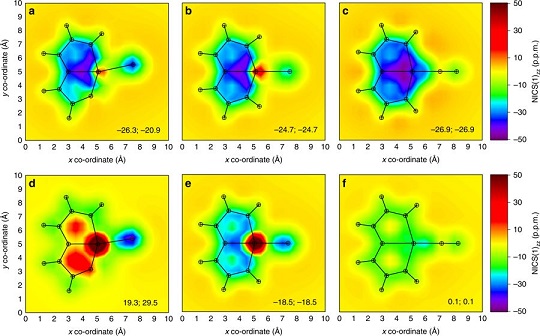Adaptive aromaticity in S0 and T1 states of pentalene incorporating 16 valence electron osmium

Aromaticity is a fundamental chemical concept of ever-increasing diversity. According to Hückel’s and Baird’s rules, cyclic conjugated species with 4n+2 π-electrons are aromatic in the singlet electronic ground state (S0) and antiaromatic in the lowest triplet state (T1), and vice-versa. Thus, species with aromaticity in both states have not yet been reported. Here we carry out density functional theory calculations on recently synthesized organometallics, namely osmapentalyne and osmapentalenes, and demonstrate the first example (16-electron osmapentalene) of aromaticity in both S0 and T1 states, which we term adaptive aromaticity. Further electronic structure analysis reveals that the excitation pattern for the formation of the T1 state plays a crucial role in the achievement of adaptive aromaticity. Our findings highlight the role of a transition metal in unorthodox excitation behavior, and may aid the design of adaptive aromatics for photochemical and molecular magnetism applications.
